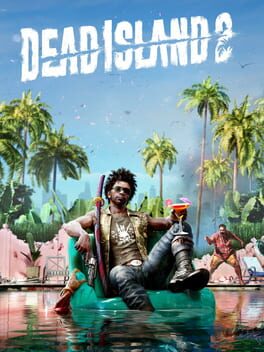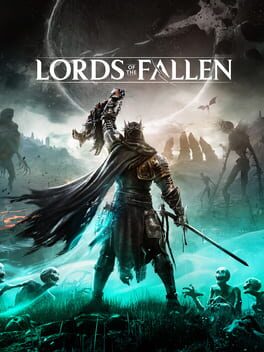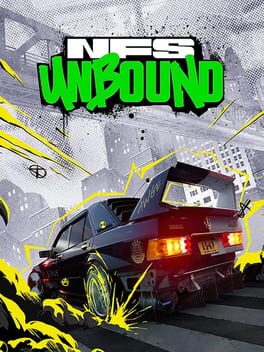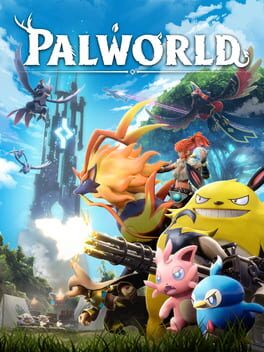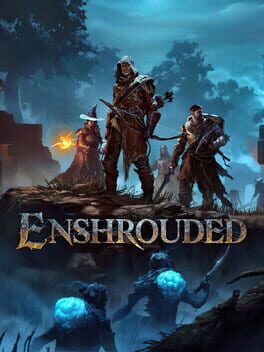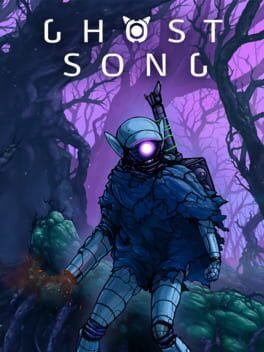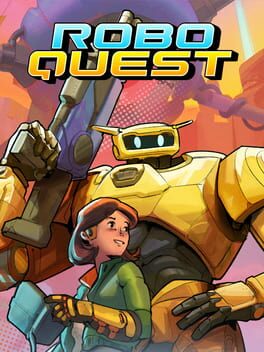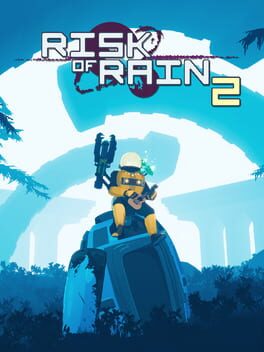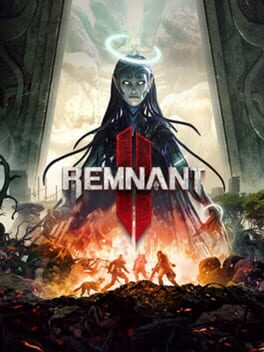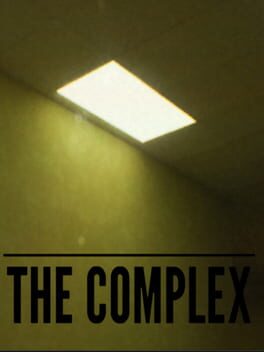Craigjs91
2023
The gameplay hasn't changed much since the original but I found it to be plenty enjoyable. Adding to this probably the best bodily trauma/dismemberment system I have ever seen in a video game makes for some pretty enthralling minute to minute gameplay. However the gameplay doesn't evolve much throughout it's runtime so it starts to get stale before the credits roll. Speaking of the credits rolling, this is another one of those games that doesn't ship with a complete story, opting to leave you hanging on an abrupt and blatant DLC-bait ending. This is a terrible industry practice in my opinion so for that I have to dock a point from the game. With that said, the game does what it is trying to do really well. This is some of the most fun I've had hacking and slashing zombies into ribbons I've had in a game and for that it's easy to overlook the rather generic and unfinished story, some less than likeable characters, and some pretty corny dialogue.
2019
2024
Wildly creative project that turns a game we all know into an amazingly fun roguelike deck-builder. Hours of fun to be had here trying new builds, unlocking new decks and jokers, and seeing how ridiculous some setups can get. There are some Joker cards that clearly define a build where others just generically help a little and I would have liked to see more of the former but that might just be a lack of creativity on my end.
2023
There is a series of dialogue early on in NFS: Unbound in which right after weaving in and out of traffic at 160 mph and putting hundreds of virtual civilians lives in danger on my way to winning an illegal street race and then forcing a cop to smash into concrete barrier at high speeds to escape his pursuit, a radio host comments on government corruption by noting that the mayor recently got a speeding ticket for going 45 in a school zone to which my protagonist responds by calling the mayor a hypocrite for trying to crack down on illegal street racing while speeding herself. This clumsy attempt at social awareness clashes severely with the fact that we are playing a game centered around illegal street racing and if you try to bring in any real sense of ethics or morality into the game, we are the clearly the bad guys as we endanger many a civilian for nothing more than money and a quick thrill. Social commentary is fine in gaming, but it's hard to make comments about the criminal justice system while the protagonist is doing blatantly reprehensible things. This is no Robin Hood-esque tale, we are not stealing bread to feed our family - we are just racing for money and because we like it - and being an orphan doesn't give you carte blanche to break the law. Sadly a large chunk of the dialogue in this game suffers from this same dissonance which prompted me to turn the dialogue volume down to where it wouldn't distract me from the main attraction which is the racing. And just as it should be, this is where the game shines. I'd also like to add that the street art style effects that burst out of your car when you drift, use nitrous, or generally do anything cool are surprisingly effective and add a kineticism and punchiness to the already action packed gameplay. The truth is though that the racing game market is pretty saturated and while this game is fun, it doesn't hold a candle to Forza Horizon 4 which came out 4 years earlier.
2024
Ahh, Palworld. Simultaneously representing the best and worst of the gaming industry. The worst in that the game is borderline IP theft and blatantly stealing and combining elements of other games. But the best in that it somehow all comes together to create something quite unique, fun, and better than anything the main victim of said IP theft has created in years.
In fact, this duality almost perfectly describes the tone of the game - adventuring around the colorful world catching cute Poke... erm Pals one second, then farming for the souls of dead Pals and sacrificing them to some Palworld deity in order to strengthen your little furry friends the next. You don't battle and incapacitate Pal's and their tamers, you kill them and take their hide, meat, and bones to craft better equipment. It's darks stuff, but the backdrop disguises it in an interesting way - Basically Pumped up Kicks in video game form.
As of now the game does reach a point where it starts to feel repetitive and could definitely use more settlements/towns, maybe some random encounters with other tamers who want to battle, a main storyline, more unique pal attacks, and more dungeon variety. I'd like to see Pocket Pair leverage their insane viral profits into a more complete game over the coming months, but I hear the player base is rapidly dropping off already so maybe it would make more financial sense to just take the win and move on to something else. Guess we will see what type of developer they are in the near future.
In fact, this duality almost perfectly describes the tone of the game - adventuring around the colorful world catching cute Poke... erm Pals one second, then farming for the souls of dead Pals and sacrificing them to some Palworld deity in order to strengthen your little furry friends the next. You don't battle and incapacitate Pal's and their tamers, you kill them and take their hide, meat, and bones to craft better equipment. It's darks stuff, but the backdrop disguises it in an interesting way - Basically Pumped up Kicks in video game form.
As of now the game does reach a point where it starts to feel repetitive and could definitely use more settlements/towns, maybe some random encounters with other tamers who want to battle, a main storyline, more unique pal attacks, and more dungeon variety. I'd like to see Pocket Pair leverage their insane viral profits into a more complete game over the coming months, but I hear the player base is rapidly dropping off already so maybe it would make more financial sense to just take the win and move on to something else. Guess we will see what type of developer they are in the near future.
2024
A surprisingly good under the radar game that even in it's early access form, has dozens of hours of engaging gameplay to digest. Enshrouded combines robust base building and survival mechanics with deeper RPG elements than you wouldn't expect in a survival game like this. The combat is comparable to the original Dark Souls only with less polish and impact. With that said, the combat feels to be a clear step up when compared to it's contemporaries. Besides a couple non-game-breaking bugs, I've really enjoyed my time with Enshrouded - give it a try if you enjoyed games like Valheim and V Rising.
2019
There has long been a debate about whether or not video games are art. And while this question may seem offensive to some gamers, I do understand where it comes from. Does art have to say something? Does art have to make you feel something? It's hard to define exactly what art is, but I don't think games like the thirty-fifth iteration of Assassin's Creed or Call of Duty quite make the cut. To me, a lot of games are more akin to going bowling or taking a ride on a rollercoaster in that they are fun and even memorable at times, but serve more as an entertaining way to pass the time than a piece of art - and that's totally fine. Outer Wilds is a different story however - Outer Wilds, without question, is art and also one of the best games I've ever played.
Outer Wilds explores the transience of life on many wildly creative levels. In Outer Wilds you are stuck in a time loop in which every cycle ends in you or the entire universe dying. This theme of fleeting existence is nailed home further in the melancholy yet hopeful ending in which even after figuring out all the secrets of the system you are in, after dying hundreds of times, after learning everything the Nomai have to teach, and making the perilous journey to the eye of the universe you find out that the universe will end regardless - your hard work has only saved you from the dreaded time loop and this time, when you die you won't wake up at that all too familiar campfire. The upshot of this otherwise existential dread fueling finale being that you get to say goodbye to all the friends you've made along the way and later get to see life beginning anew albeit sans you. The thematic cherry on top is that Outer Wilds is designed in such a way that knowledge of the game is the only thing holding you back from completing it - so much like life, you can only truly experience this masterpiece once.
Outer Wilds explores the transience of life on many wildly creative levels. In Outer Wilds you are stuck in a time loop in which every cycle ends in you or the entire universe dying. This theme of fleeting existence is nailed home further in the melancholy yet hopeful ending in which even after figuring out all the secrets of the system you are in, after dying hundreds of times, after learning everything the Nomai have to teach, and making the perilous journey to the eye of the universe you find out that the universe will end regardless - your hard work has only saved you from the dreaded time loop and this time, when you die you won't wake up at that all too familiar campfire. The upshot of this otherwise existential dread fueling finale being that you get to say goodbye to all the friends you've made along the way and later get to see life beginning anew albeit sans you. The thematic cherry on top is that Outer Wilds is designed in such a way that knowledge of the game is the only thing holding you back from completing it - so much like life, you can only truly experience this masterpiece once.
2022
On paper Ghost Song is another in a growing list of reasonably enjoyable metroidvanias that doesn't do much do drive the genre forward in a meaningful way. However what stood out to me is the mood. Even on this dead world full of dangerous creatures there's this uncanny calmness to the atmosphere. This is portrayed perfectly through the beautifully gentle voice acting of the player character. The world is full of deep lore and shrouded in mystery. Our protagonist has no memories and we don't even know if she's human, an artificial intelligence, or something else. Just that she is inherently a caring and considerate being that feels the need to help others. I'll stop there as to avoid spoilers but the interesting world, tone, and story give extra weight to what is otherwise a fun but unspectacular game.
2023
Not sure if a game has been so polarizing to me before. There are a lot of aspects of Sea of Stars that I truly loved like the story, the combat, the constant introduction of new interesting characters, and the perspective altering hook that occurs about two-thirds of the way through the story. On the other hand, I also absolutely detested some of the design decisions in this game like the underutilization of it's core mechanics, the lame tumblr art cutscenes, lots of empty and long backtracking sections, and the tedious busy-work they ask you to do to unlock the "true ending" which in my opinion is worse narratively than the default ending.
In Sea of Stars you play as Zale and Valere, two young kids born on the solstice dropped off by an eagle to an island in which they will be groomed into magical fighters known as solstice warriors who's purpose is to fight off a terrible evil that threatens their world. Zale and Valere are being mentored by Headmaster Moraine who runs the Zenith Academy which exists to prepare solstice warriors for the dangers they will face. Standard JRPG open here, you are the chosen one (um.. or two), big bad to go fight, the world lies in the balance, good stuff overall. What makes the story interesting is all the characters you meet along the way as you inch closer to the confrontation with the big bad of the game. There is an innocence and naïveté to the writing which might sound like a negative, but I totally loved it. Humanizing the villain is becoming an overplayed trope in stories lately so it's refreshing to see a simple good guys vs. bad guys story. When I say good guys, I mean really good too, they are so squeaky clean perfect that it's almost painful at first but the characters really grow on you eventually. This happy go lucky attitude that encompasses most of the story forces your guard down so when the sad moments happen (and they do happen) it really hits you hard.
The combat is typical turn based JRPG fare but with a few additional elements added. For starters there is a timing element in which you can do additional damage on attacks if you time a button push perfectly with the impact of the attack. They also added a mechanic where most enemies will periodically wind up for a big attack which will give you some number of turns in order to pair the right combination of damage types together in order to cancel their attack. For example you may have 2 turns to hit an enemy with sharp, blunt, and moon damage or they will do a large AoE attack. These mechanics keep the gameplay fresh as you will be solving puzzles of how to stop enemies from performing their most dangerous attacks pretty much all fight and having to time your attacks perfectly to do maximum damager per attack. No real complaints here, though I would have liked to see more progression of spells and attacks like a FF Fire/Fira/Firaga system for example.
Exploration is mostly fine but I find it lacking in a few areas. For one the world is open, but has virtually no reason for being that way except in the last act of the game. You can roam around on your ship all day but can't explore most areas until you have the appropriate key item to unlock the entrance so it's slightly pointless. Returning back to previously explored places doesn't reward you with anything new except in a exceedingly small number of circumstances and yet you are asked to do just that a number of times towards the end of the game. These hollow backtracking sections are awful and are just screaming for some sort of enemy evolution or previously inaccessible areas made explorable with a newly acquired skill. Being able to free roam in a boat is great if handled appropriately, sailing around the ocean isn't fun unless there are some hidden things to find like an island with a secret boss hiding some cool loot or something and sadly that is nowhere to be found in this game... Again, until the last act of the game. The dungeon puzzles are so simple that usually you see what needs to be done as soon as you enter the area making the process of solving the puzzle seem more like busy work than actually solving a problem. I also feel like the designers totally underutilized time of day manipulation mechanics. It would have been nice to see maybe stronger or different enemies at night, maybe some environments that are only accessible at certain times of the day, or even a buff to Zale's damage during the day and Valere's damage at night. These are just the first few things that pop into my head, I imagine a lot more could have been done with this mechanic than the rather dull prism light puzzles that are scattered throughout the game.
Finally, hiding the "true ending" behind a fetch quest which requires going on an easter egg hunt backtracking through the whole game with no direction or knowledge of where to look when we've already discussed that backtracking in this game is terribly dull was a total dick move. "Why don't you just look up a guide" I hear you say, well a) because I shouldn't have to do that to get the "true ending", and b) because I had already found about 40/60 of the rainbow conches on my initial trek through the map so this would still require me to go through a list of all 60 to make sure I got them all, and sorry but I'm just not going to do that. If you design your game to require immense tedium OR going on the internet to find the solution to get true ending, I'm going to use the internet in a more efficient way and simply go on YouTube to watch the true ending and save a bunch of hassle. All the other hidden quests to unlock the true ending were totally fine with me and I actually did 5 of the 7 without even knowing there was a true ending that had these missions as a prerequisite.
Overall I really enjoyed most of my time with Sea of Stars and it scratched that nostalgic SNES JRPG itch I've been having for a while. I thought it had one of the most interesting worlds and stories I've seen in an indie RPG. And it could have been an all-timer if they fixed the issues I mentioned previously. Another plus is with the way the story unfolds it opens the door to all kinds of possibilities sequel-wise which in this case I think is pretty cool and I look forward to seeing what they do next.
In Sea of Stars you play as Zale and Valere, two young kids born on the solstice dropped off by an eagle to an island in which they will be groomed into magical fighters known as solstice warriors who's purpose is to fight off a terrible evil that threatens their world. Zale and Valere are being mentored by Headmaster Moraine who runs the Zenith Academy which exists to prepare solstice warriors for the dangers they will face. Standard JRPG open here, you are the chosen one (um.. or two), big bad to go fight, the world lies in the balance, good stuff overall. What makes the story interesting is all the characters you meet along the way as you inch closer to the confrontation with the big bad of the game. There is an innocence and naïveté to the writing which might sound like a negative, but I totally loved it. Humanizing the villain is becoming an overplayed trope in stories lately so it's refreshing to see a simple good guys vs. bad guys story. When I say good guys, I mean really good too, they are so squeaky clean perfect that it's almost painful at first but the characters really grow on you eventually. This happy go lucky attitude that encompasses most of the story forces your guard down so when the sad moments happen (and they do happen) it really hits you hard.
The combat is typical turn based JRPG fare but with a few additional elements added. For starters there is a timing element in which you can do additional damage on attacks if you time a button push perfectly with the impact of the attack. They also added a mechanic where most enemies will periodically wind up for a big attack which will give you some number of turns in order to pair the right combination of damage types together in order to cancel their attack. For example you may have 2 turns to hit an enemy with sharp, blunt, and moon damage or they will do a large AoE attack. These mechanics keep the gameplay fresh as you will be solving puzzles of how to stop enemies from performing their most dangerous attacks pretty much all fight and having to time your attacks perfectly to do maximum damager per attack. No real complaints here, though I would have liked to see more progression of spells and attacks like a FF Fire/Fira/Firaga system for example.
Exploration is mostly fine but I find it lacking in a few areas. For one the world is open, but has virtually no reason for being that way except in the last act of the game. You can roam around on your ship all day but can't explore most areas until you have the appropriate key item to unlock the entrance so it's slightly pointless. Returning back to previously explored places doesn't reward you with anything new except in a exceedingly small number of circumstances and yet you are asked to do just that a number of times towards the end of the game. These hollow backtracking sections are awful and are just screaming for some sort of enemy evolution or previously inaccessible areas made explorable with a newly acquired skill. Being able to free roam in a boat is great if handled appropriately, sailing around the ocean isn't fun unless there are some hidden things to find like an island with a secret boss hiding some cool loot or something and sadly that is nowhere to be found in this game... Again, until the last act of the game. The dungeon puzzles are so simple that usually you see what needs to be done as soon as you enter the area making the process of solving the puzzle seem more like busy work than actually solving a problem. I also feel like the designers totally underutilized time of day manipulation mechanics. It would have been nice to see maybe stronger or different enemies at night, maybe some environments that are only accessible at certain times of the day, or even a buff to Zale's damage during the day and Valere's damage at night. These are just the first few things that pop into my head, I imagine a lot more could have been done with this mechanic than the rather dull prism light puzzles that are scattered throughout the game.
Finally, hiding the "true ending" behind a fetch quest which requires going on an easter egg hunt backtracking through the whole game with no direction or knowledge of where to look when we've already discussed that backtracking in this game is terribly dull was a total dick move. "Why don't you just look up a guide" I hear you say, well a) because I shouldn't have to do that to get the "true ending", and b) because I had already found about 40/60 of the rainbow conches on my initial trek through the map so this would still require me to go through a list of all 60 to make sure I got them all, and sorry but I'm just not going to do that. If you design your game to require immense tedium OR going on the internet to find the solution to get true ending, I'm going to use the internet in a more efficient way and simply go on YouTube to watch the true ending and save a bunch of hassle. All the other hidden quests to unlock the true ending were totally fine with me and I actually did 5 of the 7 without even knowing there was a true ending that had these missions as a prerequisite.
Overall I really enjoyed most of my time with Sea of Stars and it scratched that nostalgic SNES JRPG itch I've been having for a while. I thought it had one of the most interesting worlds and stories I've seen in an indie RPG. And it could have been an all-timer if they fixed the issues I mentioned previously. Another plus is with the way the story unfolds it opens the door to all kinds of possibilities sequel-wise which in this case I think is pretty cool and I look forward to seeing what they do next.
2020
One of the best roguelikes I've played in a while, this time going with a borderlands-esque first person shooter framework to build it's gameplay loop around. There are plenty of classes, builds, and guns to keep each loop fresh and plenty of secret paths to unlock to make repeated play rewarding. Highly recommend this for fans of the genre.
2019
Both the original and the sequel are awesome games in which the loop stays fun for a surprisingly long time. While I would probably say I prefer the first installment, Risk of Rain 2 is one of those games that I will pick up and play a little bit every few months. A perfect game to play while listening to a podcast or audiobook.
2023
A rare soulslike that sets itself apart from the growing list the genre has to offer by both creating an interesting and unique world that isn't just a generic copy of the dark, mysterious tone that Dark Souls made famous and by totally nailing the tough but fair combat mechanics that are a necessity for a game with this type of difficulty level.
The world is unique and feels like a fully realized idea. You can tell there was some real inspiration and vision here, it's not just a generic dark, grim world where everyone is vaguely sad and speaks in riddles. Some real thought went into crafting this world and it really stands out when compared to most games in the genre. I really can't overstate just how impressed I was with the ability to pull off such an interesting take on such an old and well explored story like Pinocchio and how well it works without feeling derivative or cheesy at all. Truly impressive stuff here.
The biggest reason most soulslikes fall short for me is that a lot of them don't seem to understand the balance that has to be struck between the combat controls and difficulty. If your game has enemies that constantly attack at a fervent pace, your character must be equipped with tools to deal with that (think Sekiro's parry and lack of stamina gauge for example) or if you want to restrict the pace of combat (with stamina bars that cap how many actions you can take in a certain period of time) you must design your enemies with those choices in mind. If you don't get this balance totally correct then the game will feel either extremely unfair or too easy; most souls clones seem to fall on the unfair side. Lies of P however hits this balance perfectly in their own unique way that is like a hybrid of Bloodborne and Sekiro. Lies of P chooses to give you a stamina bar and also the ability to block or parry. Blocking will still damage you but allows you to regain some of the lost health by landing attacks on an enemy (similar to the rally mechanic in BB) - landing a parry, while more risky, will not only cause you to avoid all damage, but will also damage the enemies posture meter (similar to Sekiro). This setup works perfectly with the boss design where most boss fights will attack with multi-hit flurries then give you a small window of time to punish and regain stamina.
My only complaint here is that once you get to a certain point pretty much every boss has multiple phases sometimes changing their move set once you hit a certain percentage of their health bar and sometimes waiting until you deplete their health completely before changing form and you having to start from scratch against totally new mechanics. Something about this just feels a little cheap to me as there's really no way of knowing if a boss has a second phase the first time you fight them. Sometimes you can feel it coming as the fight will be a little easy so you expect it, but other times the first phase feels hard enough to be a single phase fight then out of nowhere they restore all health and gain a whole new, usually more difficult, move set. This type of multiphase design essentially means that more often than not you will die at least once or twice on every fight because you'll use all your healing items learning phase one and have none remaining for phase two. So it turns into a practice makes perfect style of fight where you have to get good enough at phase one to make it through with enough health and healing items to conquer phase two. In a game like this learning a lesson usually means taking a significant amount of damage, and you can only afford so many mistakes per attempt so it just seems pretty lame to make us learn so many lessons for one fight. I think about it almost like if you are in school and your teacher gives you a test and then, much to your chagrin, as soon as you finish they hand you a whole other test that you weren't informed about. Some people might think this is a good thing, but I found it to be an annoyance especially towards the end where most of the phase one fights are hard enough to be their own singular boss fight.
Other than that one issue , I genuinely enjoyed this game and it is probably my favorite non-Fromsoft soulslikes that I've played (that isn't also a 2D metroidvania anyway) and I would recommend to anyone who is a fan of the genre.
The world is unique and feels like a fully realized idea. You can tell there was some real inspiration and vision here, it's not just a generic dark, grim world where everyone is vaguely sad and speaks in riddles. Some real thought went into crafting this world and it really stands out when compared to most games in the genre. I really can't overstate just how impressed I was with the ability to pull off such an interesting take on such an old and well explored story like Pinocchio and how well it works without feeling derivative or cheesy at all. Truly impressive stuff here.
The biggest reason most soulslikes fall short for me is that a lot of them don't seem to understand the balance that has to be struck between the combat controls and difficulty. If your game has enemies that constantly attack at a fervent pace, your character must be equipped with tools to deal with that (think Sekiro's parry and lack of stamina gauge for example) or if you want to restrict the pace of combat (with stamina bars that cap how many actions you can take in a certain period of time) you must design your enemies with those choices in mind. If you don't get this balance totally correct then the game will feel either extremely unfair or too easy; most souls clones seem to fall on the unfair side. Lies of P however hits this balance perfectly in their own unique way that is like a hybrid of Bloodborne and Sekiro. Lies of P chooses to give you a stamina bar and also the ability to block or parry. Blocking will still damage you but allows you to regain some of the lost health by landing attacks on an enemy (similar to the rally mechanic in BB) - landing a parry, while more risky, will not only cause you to avoid all damage, but will also damage the enemies posture meter (similar to Sekiro). This setup works perfectly with the boss design where most boss fights will attack with multi-hit flurries then give you a small window of time to punish and regain stamina.
My only complaint here is that once you get to a certain point pretty much every boss has multiple phases sometimes changing their move set once you hit a certain percentage of their health bar and sometimes waiting until you deplete their health completely before changing form and you having to start from scratch against totally new mechanics. Something about this just feels a little cheap to me as there's really no way of knowing if a boss has a second phase the first time you fight them. Sometimes you can feel it coming as the fight will be a little easy so you expect it, but other times the first phase feels hard enough to be a single phase fight then out of nowhere they restore all health and gain a whole new, usually more difficult, move set. This type of multiphase design essentially means that more often than not you will die at least once or twice on every fight because you'll use all your healing items learning phase one and have none remaining for phase two. So it turns into a practice makes perfect style of fight where you have to get good enough at phase one to make it through with enough health and healing items to conquer phase two. In a game like this learning a lesson usually means taking a significant amount of damage, and you can only afford so many mistakes per attempt so it just seems pretty lame to make us learn so many lessons for one fight. I think about it almost like if you are in school and your teacher gives you a test and then, much to your chagrin, as soon as you finish they hand you a whole other test that you weren't informed about. Some people might think this is a good thing, but I found it to be an annoyance especially towards the end where most of the phase one fights are hard enough to be their own singular boss fight.
Other than that one issue , I genuinely enjoyed this game and it is probably my favorite non-Fromsoft soulslikes that I've played (that isn't also a 2D metroidvania anyway) and I would recommend to anyone who is a fan of the genre.
2023
Clearly not designed to be played single player yet gives you the option to do so, so the creators don't get a pass and should have put in the work to make it less of a slog to get through solo by adjusting boss health, damage, or maybe even attack frequency. Just be forewarned that I will be judging this game from my single player experience and if you are a fan of multiplayer experiences I'm sure your feelings may be different.
Remnant II is another one of these mediocre games that is trying so hard to be a Fromsoft game yet is just screaming to be more of an ARPG looter shooter like Borderlands. Wandering around sprawling levels killing trash mobs and the occasional miniboss type enemy is where this game shines. These sections are quite enjoyable as you dispatch waves of enemies, loot upgrade materials, complete side quests, and search for hidden chests filled with juicy loot. The game however felt the need to plop these poorly designed Dark Souls-esque bosses at the end of each of these levels and this brings me to my primary complaint of the game.
The punishing difficulty just doesn't work here as the clunky controls, awfully slow reload times, and bullet sponginess of bosses are what makes it difficult not the actual boss mechanics. Being hard because you have to dodge the same two attacks fifty times in a row and hope the jankiness of the controls don't screw you over half way through the fight is not fun nor rewarding, it's basically just rolling dice and praying the right number hits. And who decided that instant death attacks were a good idea in a game where you frequently have to stop looking at the boss to fight other trash mobs or look for ammo? When have instant death attacks ever been a good idea in general?
Awful boss fights aside, the rest of the game is actually quite fun... Not great by any stretch of the imagination and definitely gets a bit repetitive, but fun enough to keep your interest for a while.
P.S. The game crashes way too frequently for one that has been out this long. Averaging about one crash per 2-3 hours of gameplay.
P.P.S. The Labyrinth Sentinel boss fight might be the worst boss fight ever created in a game. What a joke this fight is.
Remnant II is another one of these mediocre games that is trying so hard to be a Fromsoft game yet is just screaming to be more of an ARPG looter shooter like Borderlands. Wandering around sprawling levels killing trash mobs and the occasional miniboss type enemy is where this game shines. These sections are quite enjoyable as you dispatch waves of enemies, loot upgrade materials, complete side quests, and search for hidden chests filled with juicy loot. The game however felt the need to plop these poorly designed Dark Souls-esque bosses at the end of each of these levels and this brings me to my primary complaint of the game.
The punishing difficulty just doesn't work here as the clunky controls, awfully slow reload times, and bullet sponginess of bosses are what makes it difficult not the actual boss mechanics. Being hard because you have to dodge the same two attacks fifty times in a row and hope the jankiness of the controls don't screw you over half way through the fight is not fun nor rewarding, it's basically just rolling dice and praying the right number hits. And who decided that instant death attacks were a good idea in a game where you frequently have to stop looking at the boss to fight other trash mobs or look for ammo? When have instant death attacks ever been a good idea in general?
Awful boss fights aside, the rest of the game is actually quite fun... Not great by any stretch of the imagination and definitely gets a bit repetitive, but fun enough to keep your interest for a while.
P.S. The game crashes way too frequently for one that has been out this long. Averaging about one crash per 2-3 hours of gameplay.
P.P.S. The Labyrinth Sentinel boss fight might be the worst boss fight ever created in a game. What a joke this fight is.
I've always viewed liminal spaces as the architectural version of the uncanny valley phenomenon. A place that generally makes sense but is just... off enough to produce feelings of uneasiness and unfamiliarity. In The Complex: Found Footage this concept is explored impressively well for what I can only assume was either a solo effort or a really small team of people probably working for free just trying to create something cool and interesting.
Whether it be a sprawling open but totally empty space, a library devoid of books, a child's playroom with no children or toys, an art gallery housing no art, or the drab yellow wallpapered rooms and corridors that never seem to totally release you from their nightmarish grasp, these areas make just enough sense that you feel grounded but they are totally missing that human element that gives them purpose. Adding to this these rooms are often connected and shaped in ways that are simply illogical in terms of function but clearly not intentionally done for artistic purposes either. It's almost like these rooms were created by some malfunctioning rogue artificial intelligence with no off switch and no true understanding of humanity or the function these spaces serve, instead only a vague understanding of the form: enclosed by walls, floor and a ceiling, at least one entrance, sometimes with wallpaper for decoration. These are human environments not built by or for humans and there is something particularly eerie about that.
The game loses some of it's spark in the final act with some less inspired environments and trying to vaguely explain some semblance of story but those first handful of areas really touched on something quite special. And for a game that is totally free and provided me with a unique experience, how could I not recommend it.
Whether it be a sprawling open but totally empty space, a library devoid of books, a child's playroom with no children or toys, an art gallery housing no art, or the drab yellow wallpapered rooms and corridors that never seem to totally release you from their nightmarish grasp, these areas make just enough sense that you feel grounded but they are totally missing that human element that gives them purpose. Adding to this these rooms are often connected and shaped in ways that are simply illogical in terms of function but clearly not intentionally done for artistic purposes either. It's almost like these rooms were created by some malfunctioning rogue artificial intelligence with no off switch and no true understanding of humanity or the function these spaces serve, instead only a vague understanding of the form: enclosed by walls, floor and a ceiling, at least one entrance, sometimes with wallpaper for decoration. These are human environments not built by or for humans and there is something particularly eerie about that.
The game loses some of it's spark in the final act with some less inspired environments and trying to vaguely explain some semblance of story but those first handful of areas really touched on something quite special. And for a game that is totally free and provided me with a unique experience, how could I not recommend it.
